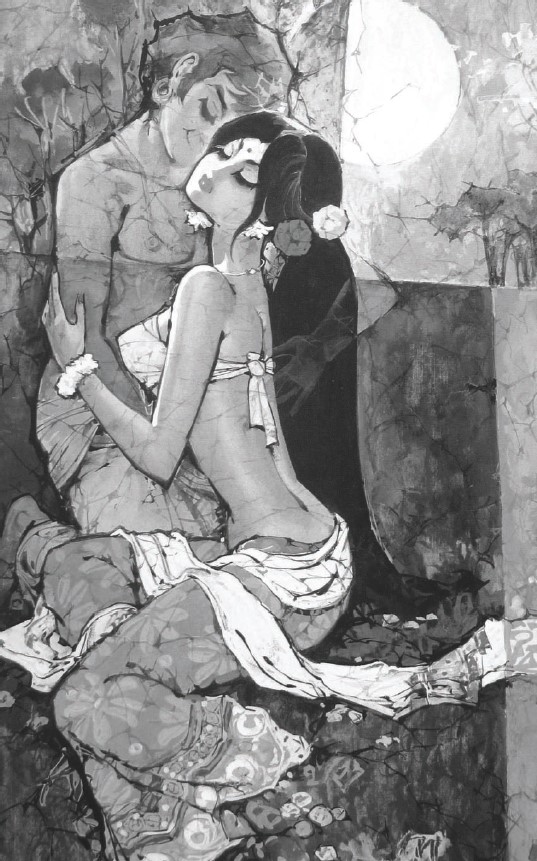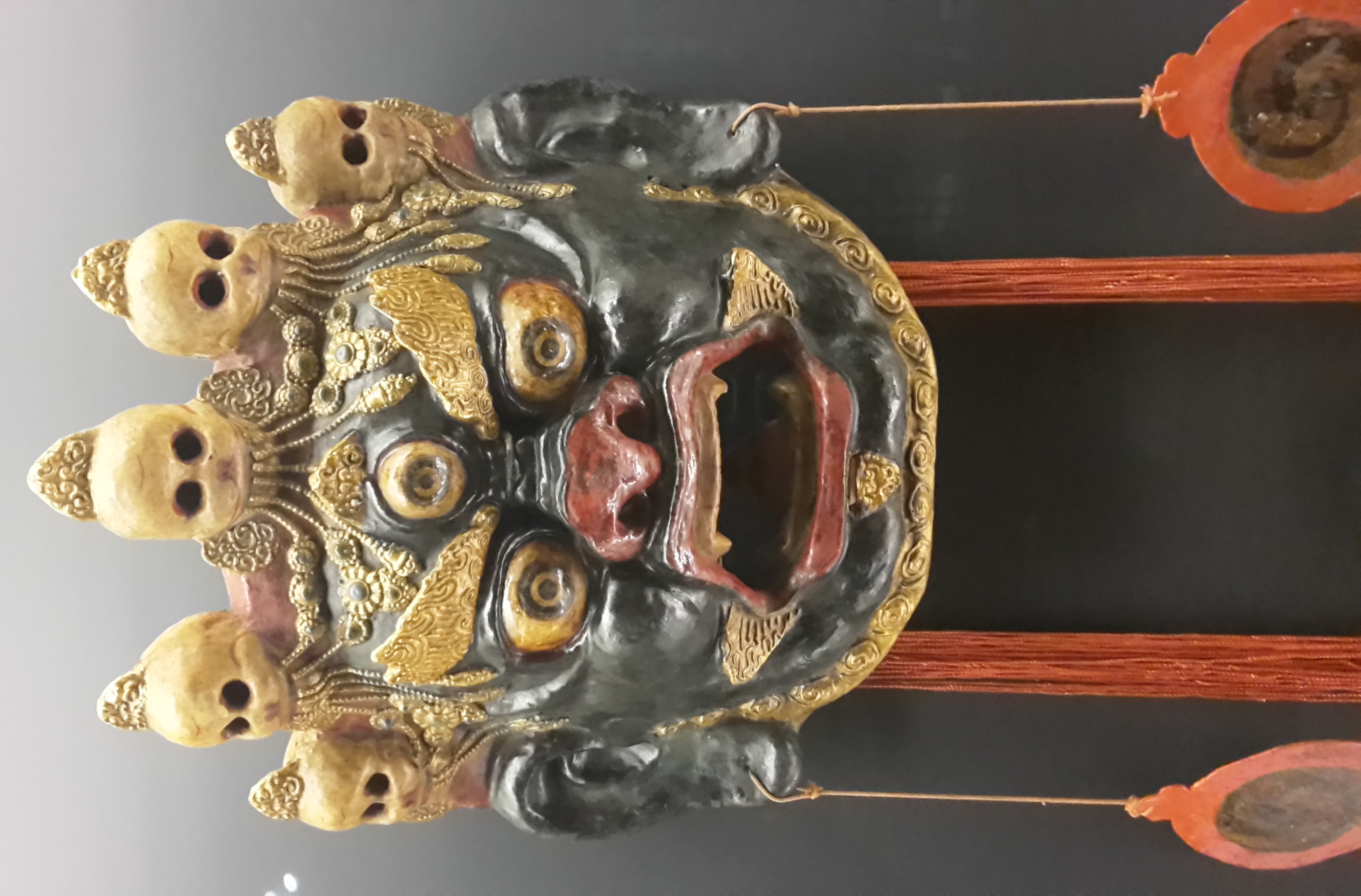|
Vidyakara
Vidyakara (c. 1050–1130) was a Buddhist scholar and poetry anthologist, noted for the Sanskrit poetry compilation ''Subhashitaratnakosha'' ( IAST: ''Subhāṣitaratnakoṣa''), which has been considered the "most celebrated" anthology of Sanskrit verse. Most of the verses, where authorship is noted, range over the two centuries prior to compilation; hence it may be thought of as a compilation of "modern verse" for the period. Little is known about Vidyakara himself. D. D. Kosambi has argued compellingly that Vidyakara was a senior monk at the Jagaddala Vihara monastery in North Bengal, based on evidence including markings on the palm-leaf manuscript of an earlier edition of the work, claimed to be Vidyakara's original, of what may have been shelfmarks from the library in Jagaddala. Subhashitaratnakosha Two different versions of the anthology exist. The manuscripts were lost in Bengal during the Islamic period. Late in the 19th century, a palm leaf manuscript was located i ... [...More Info...] [...Related Items...] OR: [Wikipedia] [Google] [Baidu] |
Achalasimha
Achala-simha (IAST: Acala-siṃha) was a Sanskrit-language poet from India, who lived in the 12th century or earlier. His verses appear in several anthologies of Sanskrit poems. Biography Achalasimha, sometimes called Achala (IAST: Acala), has been quoted in ''Subhashita-ratna-kosha'' of the 12th century anthologist scholar Vidyakara. Therefore, he must have lived in the 12th century or earlier. He may be same as the Buddhist author Achalasimha who wrote a tantra, tantric text, but this cannot be said with certainty. Achalasimha appears to have been a well-known poet of his time. A verse in ''Sharngadhara-paddhati'' mentions him alongside other well-known poets, including Amarasimha, Amara, Abhinanda and Kalidasa; and dismisses other poets as imitators. He is among the ten most frequently quoted poets in Vidyakara's ''Subhashita-ratna-kosha''. Example verses One of Achalasimha's verses, about a pearl and addressed to a young woman, is included in Vidyakara's ''Subhashita-rat ... [...More Info...] [...Related Items...] OR: [Wikipedia] [Google] [Baidu] |
Harvard Oriental Series
The ''Harvard Oriental Series'' is a book series founded in 1891 by Charles Rockwell Lanman and Henry Clarke Warren. Lanman served as its inaugural editor (1891-1934) for the first 37 volumes. Other editors of the series include Walter Eugene Clark (1934-1950, volumes 38–44), Daniel Henry Holmes Ingalls (1950-1983, volumes 45–48) and Gary Tubb (1983-1990, volume 49). Currently in its 93rd volume, the series is edited by Michael Witzel, the Wales Professor of Sanskrit in the Department of Sanskrit and Indian Studies at Harvard University, and distributed by the Harvard University Press. A subseries, ''Harvard Oriental Series Opera Minora'', "aims at the swift publication of important materials that cannot be included in the mainly text-oriented Harvard Oriental Series." Volumes of Main Series Volumes of ''Opera Minora'' subseries See also *Columbia University Indo-Iranian Series *Loeb Classical Library *Murty Classical Library of India The Murty Classical Library of India ... [...More Info...] [...Related Items...] OR: [Wikipedia] [Google] [Baidu] |
Bhavabhuti
Bhavabhūti (Devanagari: भवभूति) was an 8th-century scholar of India noted for his plays and poetry, written in Sanskrit. His plays are considered the equal of the works of Kalidasa. Bhavabhuti was born in Padmapura, Vidarbha, in Gondia district, on Maharashtra and Madhya Pradesh border. He is described as an 'Udumbara Brahmin'. His real name was ''Srikantha Nilakantha'', and he was the son of Nilakantha and Jatukarni. He received his education at 'Padmapawaya', a place some 42 km South-West of Gwalior. Dayananidhi Paramahansa is known to be his guru. He composed his historical plays at 'Kalpi', a place on banks of river Yamuna. He is believed to have been the court poet of king Yashovarman of Kannauj. Kalhana, the 12th-century historian, places him in the entourage of the king, who was defeated by Lalitaditya Muktapida, king of Kashmir, in 736 AD. Malatimadhava The play is set in the city of Padmavati. The king desires that his minister's daughter Malati marry ... [...More Info...] [...Related Items...] OR: [Wikipedia] [Google] [Baidu] |
Damodar Dharmananda Kosambi
Damodar Dharmananda Kosambi (31 July 1907 – 29 June 1966) was an Indian polymath with interests in mathematics, statistics, philology, history, and genetics. He contributed to genetics by introducing the ''Kosambi map function''. In statistics, he was the first person to develop orthogonal infinite series expressions for stochastic processes via the Kosambi–Karhunen–Loève theorem. He is also well known for his work in numismatics and for compiling critical editions of ancient Sanskrit texts. His father, Dharmananda Damodar Kosambi, had studied ancient Indian texts with a particular emphasis on Buddhism and its literature in the Pali language. Damodar Kosambi emulated him by developing a keen interest in his country's ancient history. He was also a Marxist historian specialising in ancient India who employed the historical materialist approach in his work. He is particularly known for his classic work '' An Introduction to the Study of Indian History''. He is described ... [...More Info...] [...Related Items...] OR: [Wikipedia] [Google] [Baidu] |
Sanskrit Poetry
Sanskrit literature broadly comprises all literature in the Sanskrit language. This includes texts composed in the earliest attested descendant of the Proto-Indo-Aryan language known as Vedic Sanskrit, texts in Classical Sanskrit as well as some mixed and non-standard forms of Sanskrit. Literature in the older language begins with the composition of the Ṛg·veda between about 1500 and 1000 BCE, followed by other Vedic works right up to the time of the grammarian Pāṇini around 6th or 4th century BCE (after which Classical Sanskrit texts gradually became the norm). Vedic Sanskrit is the language of the extensive liturgical works of the Vedic religion, while Classical Sanskrit is the language of many of the prominent texts associated with the major Indian religions, especially Hinduism, but also Buddhism, and Jainism. Some Sanskrit Buddhist texts are also composed in a version of Sanskrit often called Buddhist Hybrid Sanskrit or Buddhistic Sanskrit, which contains many ... [...More Info...] [...Related Items...] OR: [Wikipedia] [Google] [Baidu] |
Dharmapala
A ''dharmapāla'' (, , ja, 達磨波羅, 護法善神, 護法神, 諸天善神, 諸天鬼神, 諸天善神諸大眷屬) is a type of wrathful god in Buddhism. The name means "''dharma'' protector" in Sanskrit, and the ''dharmapālas'' are also known as the Defenders of the Justice (Dharma), or the Guardians of the Law. There are two kinds of ''dharmapala'', Worldly Guardians (''lokapala'') and Wisdom Protectors (''jnanapala''). Only Wisdom Protectors are enlightened beings. Description A protector of Buddhist dharma is called a ''dharmapala''. They are typically wrathful deities, depicted with terrifying iconography in the Mahayana and tantric traditions of Buddhism. The wrathfulness is intended to depict their willingness to defend and guard Buddhist followers from dangers and enemies. The '' Aṣṭagatyaḥ'' (the eight kinds of nonhuman beings) is one category of ''dharmapālas'', which includes the Garuda, Deva, Naga, Yaksha, Gandharva, Asura, Kinnara and Mahoraga. In ... [...More Info...] [...Related Items...] OR: [Wikipedia] [Google] [Baidu] |
1050s Births
1 (one, unit, unity) is a number representing a single or the only entity. 1 is also a numerical digit and represents a single unit of counting or measurement. For example, a line segment of ''unit length'' is a line segment of length 1. In conventions of sign where zero is considered neither positive nor negative, 1 is the first and smallest positive integer. It is also sometimes considered the first of the infinite sequence of natural numbers, followed by 2, although by other definitions 1 is the second natural number, following 0. The fundamental mathematical property of 1 is to be a multiplicative identity, meaning that any number multiplied by 1 equals the same number. Most if not all properties of 1 can be deduced from this. In advanced mathematics, a multiplicative identity is often denoted 1, even if it is not a number. 1 is by convention not considered a prime number; this was not universally accepted until the mid-20th century. Additionally, 1 is the s ... [...More Info...] [...Related Items...] OR: [Wikipedia] [Google] [Baidu] |
Vishnu
Vishnu ( ; , ), also known as Narayana and Hari, is one of the principal deities of Hinduism. He is the supreme being within Vaishnavism, one of the major traditions within contemporary Hinduism. Vishnu is known as "The Preserver" within the Trimurti, the triple deity of supreme divinity that includes Brahma and Shiva.Gavin Flood, An Introduction to Hinduism' (1996), p. 17. In Vaishnavism, Vishnu is the supreme being who creates, protects, and transforms the universe. In the Shaktism tradition, the Goddess, or Adi Shakti, is described as the supreme Para Brahman, yet Vishnu is revered along with Shiva and Brahma. Tridevi is stated to be the energy and creative power (Shakti) of each, with Lakshmi being the equal complementary partner of Vishnu. He is one of the five equivalent deities in Panchayatana puja of the Smarta tradition of Hinduism. According to Vaishnavism, the highest form of Ishvara is with qualities (Saguna), and have certain form, but is limitless, transcend ... [...More Info...] [...Related Items...] OR: [Wikipedia] [Google] [Baidu] |
Shiva
Shiva (; sa, शिव, lit=The Auspicious One, Śiva ), also known as Mahadeva (; ɐɦaːd̪eːʋɐ, or Hara, is one of the principal deities of Hinduism. He is the Supreme Being in Shaivism, one of the major traditions within Hinduism. Shiva is known as "The Destroyer" within the Trimurti, the Hindu trinity which also includes Brahma and Vishnu. In the Shaivite tradition, Shiva is the Supreme Lord who creates, protects and transforms the universe. In the goddess-oriented Shakta tradition, the Supreme Goddess ( Devi) is regarded as the energy and creative power (Shakti) and the equal complementary partner of Shiva. Shiva is one of the five equivalent deities in Panchayatana puja of the Smarta tradition of Hinduism. Shiva has many aspects, benevolent as well as fearsome. In benevolent aspects, he is depicted as an omniscient Yogi who lives an ascetic life on Mount Kailash as well as a householder with his wife Parvati and his three children, Ganesha, Kartikeya and A ... [...More Info...] [...Related Items...] OR: [Wikipedia] [Google] [Baidu] |
Dharmakirti
Dharmakīrti (fl. c. 6th or 7th century; Tibetan: ཆོས་ཀྱི་གྲགས་པ་; Wylie: ''chos kyi grags pa''), was an influential Indian Buddhist philosopher who worked at Nālandā.Tom Tillemans (2011)Dharmakirti Stanford Encyclopedia of Philosophy He was one of the key scholars of epistemology (pramāṇa) in Buddhist philosophy, and is associated with the Yogācāra and Sautrāntika schools. He was also one of the primary theorists of Buddhist atomism. His works influenced the scholars of Mīmāṃsā, Nyaya and Shaivism schools of Hindu philosophy as well as scholars of Jainism. Dharmakīrti's '' Pramāṇavārttika'', his largest and most important work, was very influential in India and Tibet as a central text on pramana ('valid knowledge instruments') and was widely commented on by various Indian and Tibetan scholars. His texts remain part of studies in the monasteries of Tibetan Buddhism. History Little is known for certain about the life of Dharmak ... [...More Info...] [...Related Items...] OR: [Wikipedia] [Google] [Baidu] |
Bāṇabhaṭṭa
Bāṇabhaṭṭa ( sa, बाणभट्ट) was a 7th-century Sanskrit prose writer and poet of India. He was the ''Asthana Kavi'' in the court of the emperor Harsha, who reigned c. 606–647 CE in north India, first from Sthanvishvara (Thanesar), and later Kannauj. Bāna's principal works include a biography of Harsha, the ''Harshacharita'' (Deeds of Harsha), and one of the world's earliest novels, '' Kadambari''. Bāṇa died before finishing the novel and it was completed by his son Bhūṣaṇabhaṭṭa. Both these works are noted texts of Sanskrit literature. The other works attributed to him are the ''Caṇḍikāśataka'' and a drama, the ''Pārvatīpariṇaya''. Banabhatta gets an applause as "banochhistam jagatsarvam" meaning Bana has described everything in this world and nothing is left. Life A detailed account regarding his ancestry and early life can be reconstructed from the introductory verses attached to the ''Kadambari'' and the first two ''ucchāvasas'' of ... [...More Info...] [...Related Items...] OR: [Wikipedia] [Google] [Baidu] |





